Even during the closures of the pandemic, families and educators were able to recognize students for their years of academic achievements. In California, 414,193 students who entered high school in 2016 earned their high school diplomas in 2020; and 51,229 of those students graduated with a State Seal of Biliteracy, a distinction that recognizes proficiency in English and one or more other languages.
Overall, 65,622 students received the State Seal of Biliteracy in 2020, higher than any previous school year (this total includes the 51,229 recipients who entered high school in 2016 and all other recipients who graduated in 2020 but entered high school in another year). Of these Seal of Biliteracy recipients, nearly half (47 percent) were current or former English learners.
In 2008, Californians Together spearheaded a campaign aimed at statewide adoption of a Seal of Biliteracy. Four years later in 2012, the State of California officially adopted its State Seal of Biliteracy. Thus far, 340 school districts have adopted the State Seal of Biliteracy and encourage students to become proficient in two or more languages.
California’s adoption of the State Seal of Biliteracy was a remarkable triumph considering the previous 18 years of English-only instruction. That triumph was made possible by changing public and political attitudes toward multilingual education. The passage of Proposition 58 in 2016, which repealed restrictions on bilingual education, demonstrated the evolution and demand for access to multilingual programs in California. Proposition 58 paved the way for the development and adoption of a new statewide English Learner policy, The English Learner Roadmap. The EL Roadmap adopted in 2017 is a policy that supports and guides districts and schools to offer comprehensive assets-based programs including those leading to biliteracy.
Additionally, in May 2018, the California Department of Education launched Global California 2030. The initiative’s purpose is to equip students with world language skills that will enable them to more fully engage with and better appreciate the rich and diverse mixture of cultures, heritages, and languages in California. This initiative calls for more than tripling the number of students earning the Seal of Biliteracy, to 150,000 graduates by 2030.
There is a need to support and encourage more students to qualify for the Seal of Biliteracy. Moreover, there is still room for improvement in ensuring that all students have equitable access to opportunities that allow them to achieve this goal. For example, 63 percent of Seal of Biliteracy recipients who entered high school in 2016 were socio-economically disadvantaged, compared to 67 percent of all graduates and 69 percent of students who entered high school in 2016 (2020 four-year graduation cohort students).
The table below provides a breakdown by ethnicity for all students who entered high school in 2016 (2020 four-year graduation cohort student):
| Ethnicity | % of Seal of Biliteracy Recipients | % of Graduates | % of Cohort Students |
| Latino | 58.8% | 52.7% | 54.1% |
| Asian | 17.9% | 10.1% | 9.2% |
| White | 16.8% | 24.1% | 23.1% |
| Filipino | 2.3% | 3.2% | 2.9% |
| African American | 1.2% | 5.2% | 5.7% |
| Pacific Islander | 0.3% | 0.6% | 0.9% |
| American Indian or Alaska Native | 0.2% | 0.5% | 0.5% |
The table shows the promise that the Seal of Biliteracy has provided to Latino and Asian students, while also highlighting opportunities to increase access to Filipino, African American, Pacific Islander, and American Indian or Alaska Native students.
Out of the 420 school districts in California eligible to offer the Seal of Biliteracy, 340 are participating (a slight increase from 321 in 2018). It is hoped that the remaining 80 districts will adopt the Seal of Biliteracy and provide access for all students across the entire State of California.
California is moving toward multilingualism for all students. The rapid increase in the number of local educational agencies adopting the Seal of Biliteracy and the number of students qualifying for that designation is heartening. The state adoption of the EL Roadmap and Global California 2030 provides the framework for further work in elevating multilingual programs and supports the vision of a multilingual state with benefits to students and the state as a whole.
- Support 100% of California’s school districts to adopt the State Seal of Biliteracy.
- Have up-to-date lists of county offices, districts, and charter schools that have adopted the Seal of Biliteracy.
- Track and report the demographics of students who receive the Seal of Biliteracy.
- Expand resources for districts, schools, and classrooms to fully implement the English Learner Roadmap including multilingual programs leading to eligibility for the Seal of Biliteracy.
- Keep the focus on Global California 2030’s goals by widely reporting on the status of goal attainment annually.
- Publishing and distributing informational materials for students in the lower grades to motivate them to develop proficiency in English and another language leading to state recognition with the State Seal of Biliteracy.
- Develop a multilingual communications campaign to reach parents of English learners to learn about the State Seal of Biliteracy and the importance and benefits of enrolling their children in multilingual programs to qualify for this recognition.
